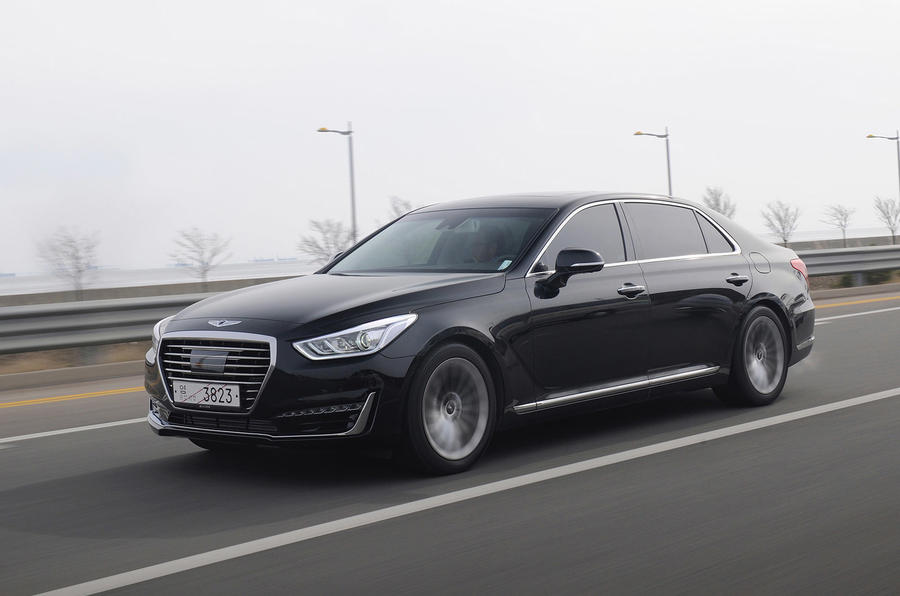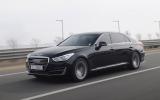What is it?
This is Hyundai’s new flagship model under its new flagship brand. Although there have been range-topping Genesis-badged models before (indeed, the current 3.8-litre Genesis executive saloon is still on sale in the UK), this G90 is the first of six all-new models.
This BMW 7-Series-sized full-size limousine will be joined by smaller G80 and G70 saloons. There will also be a mid-sized coupé and two Genesis SUVs, which are all due to arrive over the next four years.
The company says the new Genesis family is primarily aimed at Korea, the US, China and Middle Eastern markets. Sources say the brand is expected to ‘spread into Europe’ eventually, with the two SUV models most likely to arrive in showrooms.
Hyundai established a new ‘Prestige Design Division’ to develop the G90, and it’s fair to say that the company has thrown everything at creating this car. The effort kicks off with a completely re-engineered rear-drive platform. Aside from a 4.5in wheelbase stretch, the company says the new structure is 6% stiffer in “overall bending rigidity” than the current Mercedes-Benz S-Class.
Some 52% of this structure is made from what Hyundai is referring to as advanced high-strength steel (up from 17% of the outgoing platform), while 650ft of adhesive is used to bond the structure together. Interestingly, the structure is also designed to cope with the ultra-onerous ‘small overlap’ frontal crash tests now being carried out by US authorities.
One area where Hyundai wants the G90 to be class-leading is on refinement. To this end, the cabin is lined with extra layers of sound-absorbing materials, including acoustic film on all the windows, three-layer weather seals on the doors and a single seal around the powertrain bay. The car features hollow 19in alloy wheels that help reduce the transfer of tyre noise into the cabin. Even the rigidity of the transmission housing has been improved, while a new variable intake valve has been designed to reduce intake resonance at specific engine speeds.
The car’s structure rolls on substantial subframes, with double wishbone suspension up front and a multi-link set-up at the rear. This V8 model offers four switchable driving modes and ACS adaptive damping that works on both rebound and compression. ‘HTRAC’ all-wheel drive is an option on this platform, with the power take-off sending up to 40% of the engine’s torque to the front wheels.











































Join the debate
Add your comment
Lexus rival
Lexus made it from nowhere. Because people want turnkey reliability. I know scores of people, who will never touch another German car, no matter what it looks like out, and in.
Now we have Hyundai doing the same thing, Toyota did, and introduce a new marque. The G90 will be brilliant. Engineering superb. The original Lexus was very bland, yet it sold worldwide, very well. I have high expectation here, for greatness. A true Lexus rival, and only Jaguar for me, come near.
A fantastic effort
Why interesting?